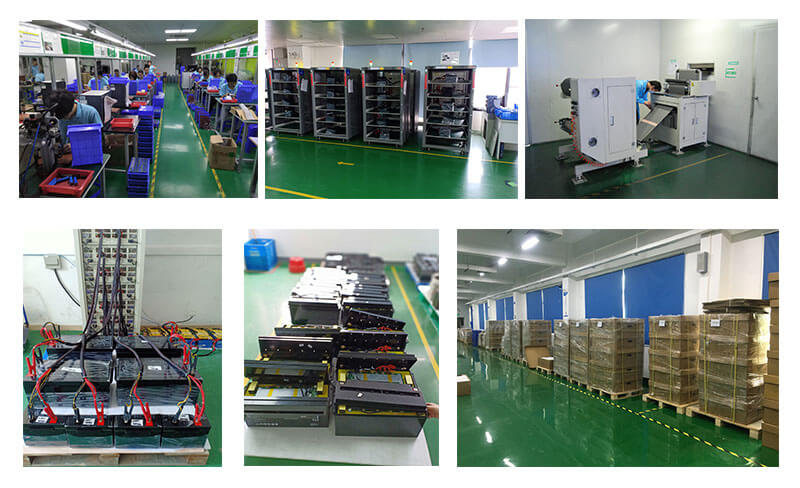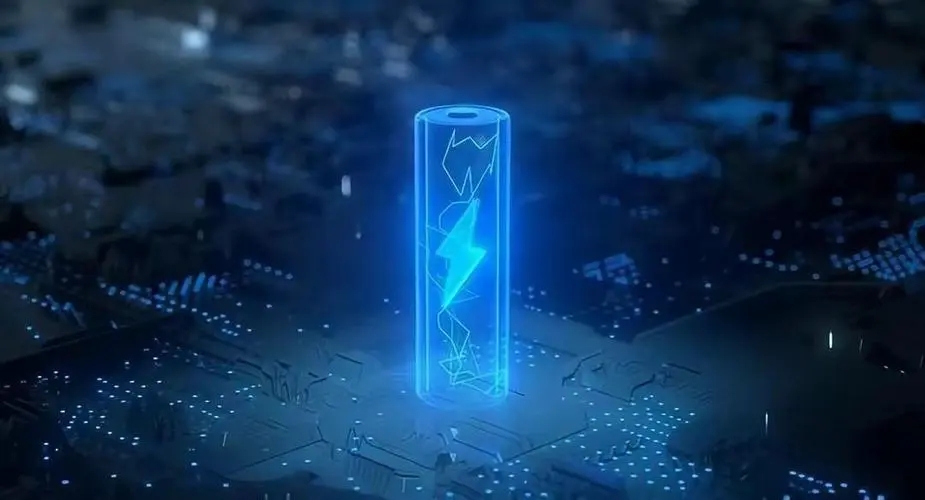Lithium-ion automotive batteries: the green heart that drives future travel
Today, as the new energy vehicle industry is booming, lithium-ion automotive batteries, as its core component, are gradually becoming a key force in promoting the transformation and upgrading of the automotive industry. In the following, the importance, technological progress, challenges and future prospects of lithium-ion automotive batteries will be explored from several key points.

1. Importance: The core of energy storage
High energy density: Compared to traditional lead-acid batteries, lithium-ion batteries have a higher energy density, which means that more electrical energy can be stored in the same weight or volume, which is crucial for improving the range of electric vehicles.
Long cycle life: Lithium-ion batteries typically have a long cycle life. After thousands of charge/discharge cycles, they can still maintain a high capacity, reducing the long-term cost of ownership.
Environmental benefits: Although there are certain environmental impacts in the production and recycling of batteries, compared with fuel vehicles, electric vehicles have almost zero emissions during the use phase, which makes a significant contribution to environmental protection.
2. Technological progress: Continuous innovation, breaking boundaries
Research and development of solid-state batteries: Solid-state batteries are considered to be the development direction of the next generation of lithium-ion batteries. They use solid electrolytes instead of liquid electrolytes, which can greatly improve safety and further increase energy density.
Fast charging technology: With the advancement of fast-charging technology, lithium-ion batteries can quickly replenish energy in a short period of time, reducing charging time and improving user experience.
Battery Management System Optimization: Advanced battery management system (BMS) can accurately monitor battery status, effectively balance the power distribution within the battery pack, and extend the overall life of the battery.
3. Challenges faced
Cost issues: Although the production cost of lithium-ion batteries has decreased year by year, for ordinary consumers, the initial purchase cost of electric vehicles is still higher than that of fuel vehicles of the same level.
Safety: Thermal runaway and short circuit are the main safety risks of lithium-ion batteries, and it is necessary to continuously optimize battery design and material selection to ensure safe use.
Resource constraints: The tight global supply of key raw materials such as lithium and cobalt, as well as the environmental impact of mining, are important factors limiting the large-scale application of lithium-ion batteries.

Our lithium batteries boast an impressive cycle life, ensuring longevity and reliability over the years.
4. Future Prospects: Green, Smart and Sustainable
Resource recycling: With the advancement of battery recycling technology, the raw material recovery rate of lithium-ion batteries will be greatly improved in the future, creating a closed-loop economy and reducing dependence on natural resources.
Intelligent integration: Combined with technologies such as the Internet of Things and big data, the future automotive battery system will be more intelligent, able to dynamically adjust energy distribution according to driving habits and road conditions, and improve energy efficiency.
Diversified applications: In addition to electric vehicles, lithium-ion batteries will also be widely used in energy storage systems, drones, power tools and other fields to promote the overall transformation of the energy structure.
In summary, lithium-ion automotive batteries are not only the cornerstone for the development of new energy vehicles, but also one of the key technologies to promote the global energy revolution. In the face of challenges, continuous technological innovation and reasonable policy guidance will be the key to promoting the healthy development of the lithium-ion battery industry. In the future, with continuous technology breakthroughs and further cost reductions, lithium-ion batteries will play an increasingly important role in promoting the global transition to a low-carbon, green and sustainable energy system.
-
 The High-Capacity 12V 200Ah LiFePO4 Lithium Battery is a powerful and innovative solution to all your battery needs. This battery is a high-capacity, long-lasting, and reliable power source that is perfect for a wide range of applications, including electric vehicles, solar power systems, and backup power systems. The LiFePO4 (Lithium Iron Phosphate) technology used in this battery ensures high...Citeşte mai mult
The High-Capacity 12V 200Ah LiFePO4 Lithium Battery is a powerful and innovative solution to all your battery needs. This battery is a high-capacity, long-lasting, and reliable power source that is perfect for a wide range of applications, including electric vehicles, solar power systems, and backup power systems. The LiFePO4 (Lithium Iron Phosphate) technology used in this battery ensures high...Citeşte mai mult -
 A marine starting battery is an essential component of any watercraft. It provides the power needed to start the engine and get the boat moving. Without a reliable starting battery, your boat won't be able to function at all. That's why it's crucial to choose the right battery for your needs. When shopping for a marine starting battery, there...Citeşte mai mult
A marine starting battery is an essential component of any watercraft. It provides the power needed to start the engine and get the boat moving. Without a reliable starting battery, your boat won't be able to function at all. That's why it's crucial to choose the right battery for your needs. When shopping for a marine starting battery, there...Citeşte mai mult -
 Introduction: The demand for efficient and high-capacity batteries has been increasing rapidly in recent years due to the growing need for clean and renewable energy sources. In response to this demand, the development of advanced battery technologies has become a key focus for researchers and manufacturers worldwide. One such technology that has gained significant attention is the 12V 100Ah LiFePO4...Citeşte mai mult
Introduction: The demand for efficient and high-capacity batteries has been increasing rapidly in recent years due to the growing need for clean and renewable energy sources. In response to this demand, the development of advanced battery technologies has become a key focus for researchers and manufacturers worldwide. One such technology that has gained significant attention is the 12V 100Ah LiFePO4...Citeşte mai mult -
 Imaginează-ți asta: conduci pe un drum pustiu, la kilometri distanță de orice ajutor sau civilizație, când brusc motorul mașinii tale se oprește. Începe să se instaleze panica, când realizezi că nu ai cum să ceri ajutor sau să pornești vehiculul. Sunt situații ca acestea în care o baterie de pornire de urgență esențială devine un adevărat salvator. Un starter de urgență esențial...Citeşte mai mult
Imaginează-ți asta: conduci pe un drum pustiu, la kilometri distanță de orice ajutor sau civilizație, când brusc motorul mașinii tale se oprește. Începe să se instaleze panica, când realizezi că nu ai cum să ceri ajutor sau să pornești vehiculul. Sunt situații ca acestea în care o baterie de pornire de urgență esențială devine un adevărat salvator. Un starter de urgență esențial...Citeşte mai mult -
 With the global awareness of environmental protection and the deepening of the concept of sustainable development, electric vehicles, as representatives of clean energy vehicles, are changing our travel methods at an unprecedented speed. In this green travel revolution, electric vehicle batteries, as its core components, play a vital role. It not only determines the endurance and performance of electric vehicles,...Citeşte mai mult
With the global awareness of environmental protection and the deepening of the concept of sustainable development, electric vehicles, as representatives of clean energy vehicles, are changing our travel methods at an unprecedented speed. In this green travel revolution, electric vehicle batteries, as its core components, play a vital role. It not only determines the endurance and performance of electric vehicles,...Citeşte mai mult -
 Why Choose Lifepo4 Battery Lithium iron phosphate battery, commonly known as LiFePO4 battery, also known as LFP battery ("LFP" stands for "lithium iron phosphate"), is a lithium-ion battery with lithium iron phosphate as the positive electrode material. Because the lithium iron phosphate material is more durable, safe, and fast charging, the Lifepo4 battery pack has at least five advantages: 1...Citeşte mai mult
Why Choose Lifepo4 Battery Lithium iron phosphate battery, commonly known as LiFePO4 battery, also known as LFP battery ("LFP" stands for "lithium iron phosphate"), is a lithium-ion battery with lithium iron phosphate as the positive electrode material. Because the lithium iron phosphate material is more durable, safe, and fast charging, the Lifepo4 battery pack has at least five advantages: 1...Citeşte mai mult -
 As an important branch of lithium-ion battery, lithium iron phosphate battery has occupied a place in the new energy field with its unique safety and stability. However, with the rapid development of new energy technologies and the intensification of market competition, we can't help but ask: Is lithium iron phosphate battery really a reliable choice in the new energy field?...Citeşte mai mult
As an important branch of lithium-ion battery, lithium iron phosphate battery has occupied a place in the new energy field with its unique safety and stability. However, with the rapid development of new energy technologies and the intensification of market competition, we can't help but ask: Is lithium iron phosphate battery really a reliable choice in the new energy field?...Citeşte mai mult

